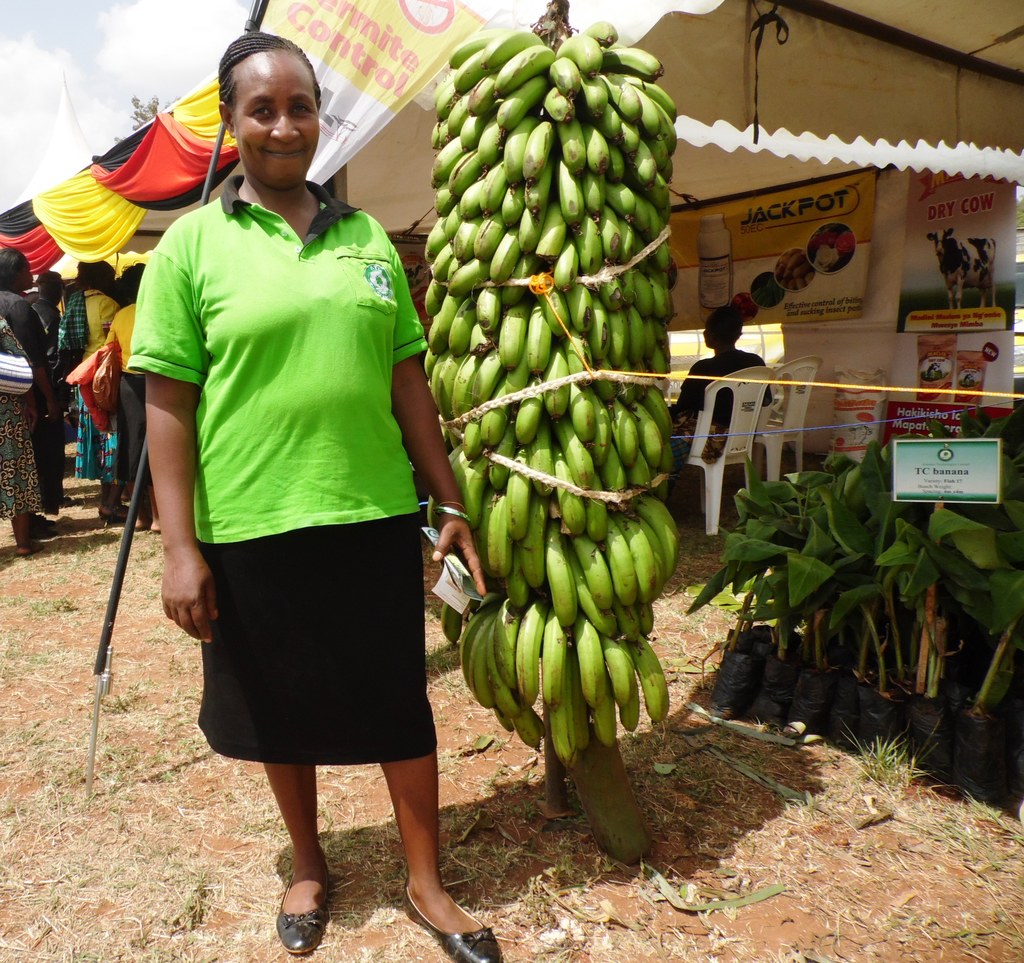Smallholder farmers in western Kenya can double the size of their banana bunches from 40 to 45kg - 80 to 100kgs by using health suckers from a clean, disease free orchard and inter-cropping with compatible crops such as beans and groundnuts.
Related articles
Banana pseudo stems value addition creating jobs for Kirinyaga women and youth
KALRO selling high quality Banana Tissue culture seedlings
Better weed management and proper advice enhances farmer’s banana prospects
Kenya has over 400,000 small holder banana farmers with 1.7 per cent of Kenya’s total arable land planted covered by bananas. Over 85 per cent of East Africans rely on banana for income and food with the global market for the crop totaling to some five billion dollars a year.
Planting bananas requires minimum effort but farmers should get some things right before getting started. According to a research by the Kenya Agricultural and Livestock Organization, once a farmer obtains suckers from healthy plants, any pests should be killed by the hot water method. This is done by heating water until just a candle melts in it (55 degrees Celsius) before removing it and putting the suckers in the hot water for 20 minutes.
A farmer displaying a giant banana at an agricultural society of Kenya show
Bananas like dark, fertile soils, lots of mulch and organic matter. Holes where bananas are planted should be dug two feet by two feet by two feet. The holes should be nine feet by nine feet apart. The top soil should be put one foot in a heap and the subsoil put in a separate heap one foot high.
Mix two ‘debes’ of manure with top soil and put the mixture back in the hole. Plant the sucker one and half to two feet deep. Use the sub–soil to fill up the hole. For higher yields, farmers should not plant more than four suckers per stool. For every six months, add two ‘debes’ of manure per stool.
Bananas thrive well in areas that are 1,200m and 1,600m above sea level, that get seasonal rainfall averaging 1,200mm, and with average temperatures of 25 degrees Celsius. In low rainfall areas like Homabay, farmers should irrigate their banana plants with 40 to 60 liters of water. However, water should be applied moderately as excess water encourages rotting of the roots due to clogging. The stems must be propped to prevent premature falling due to strong wind. A fruit is ready for harvest in 12 to 15 months after transplanting.
To prevent weeds, mulching is needed which can be done by placing dry grass six inches away from the plant and by intercropping with leguminous crops e.g. beans. It is important to de-leaf so as to get rid of old diseased leaves, burn them to reduce chances of re-infection.
Bananas should be harvested while they are still green, ensure you wear protective gear and cut the fruit with a machete carefully. The leaves of the harvested banana should be chopped and left on the ground to provide nutrients for the rest of the rest generation of banana plants.
There are different varieties of banana suitable for planting in western Kenya which includes giant Cavendish, grand nain, and Mbogoya for ripening, Uganda green for cooking, aloe vera for medicinal/cosmetics purposes and vanilla for making spices. A quarter acre of land can hold 400 banana stems, which will mature in nine to 16 months, depending on the variety.
A kilo of the fruit is sold at approximately Sh15 across Kenyan markets meaning an 80kg banana can earn a farmer Sh1200 per stem.

















Comments powered by CComment